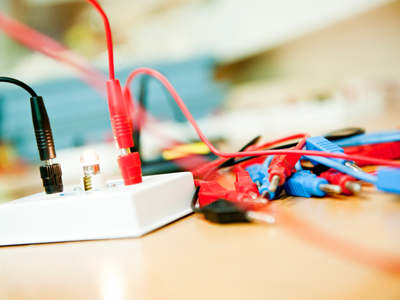
Electricity - Electrical Circuits 01
Electricity is an important topic in GCSE Physics. In this quiz we look at how the flow of electricity (the current) is measured in electrical circuits.
Electrical current flows in a closed path known as an electrical circuit. When a circuit is 'broken' it means that there is a gap which is stopping current from flowing. The break could be caused by a damaged component or wire, a component or connection that has become disconnected, or where there is a switch. Understanding the basic principles associated with electrical circuits is useful as it allows you to predict how circuits behave. If you learn a few simple equations, you will be able work out a wide variety of important values relating to circuits and components. By now, you should be very familiar with Ohm's law (V = I R) and have had plenty of opportunity to use it, but there are some other vital relationships related to electrical current and electrical circuits that you should know for your GCSE.
Ready for more?
not all...
quizzers. Try to win a coveted spot on our Hall of Fame Page.







